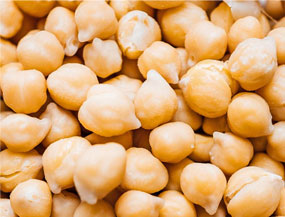Chickpea, locally known as Shimbra, is one of the major pulse crops in Ethiopia. According to CSA data (June 2015/16), the total production of Chickpea in 2009 E.C was 444,146 tons. Of this total production volume, approximately 25% is brought into the market as a surplus volume.
The two major regions, Amhara and Oromia, make up more than 90% of the total supply of chickpeas followed by Tigray and SNNP. Though the local market classifies chickpeas into different categories using color, shape and origin of chickpea, the most common type of chickpea known by origin at Messalema market include: Gondar, Gojjam, Ade’a, Wolonkomy, and Becho. In general, chickpea production by type consists of 70% Desi and the rest 30% is Kabuli type chickpea.
From the total Chickpea production in 2007 E.C, the marketable surplus volume of Kabuli was 34,346 tons and that of Desi was 80,141 tons. About 80% of the total surplus volume is destined for export market. Data sources from ERCA indicate that a total of 48,739 tons of chickpea valued at Birr 454.5 million was exported into different countries in 2014. During same period, the weighted average export price of chickpea was Birr 9,324 per ton compared to local market price of Birr 1,180 per ton. The main destinations for the Ethiopian chickpea in fiscal year 2007 E.C were India, Pakistan and UAE with market share of 35%, 34%, and 24% respectively.
Chickpea Production Volume by Type: Ethiopian Chickpea production consists of 70% of Desi and the rest 30% is a Kabuli Chickpea type. From the total Chickpea production in 2009E.C, the marketable surplus of Kabuli was 34,346 tons and that of Desi was 80,141 tons.
| GRADE | 2/3 |
| TOTAL DEFECTIVE | 0.8%/1.5% |
| SPLIT | 1.0%/1.6% |
| BROKEN/ SHRIVELED AND DAMAGE | 0.8%/1.5% |
| FREE FROM | WEEVIL , INSECTS, INFESTATION |
| Shriveled | 4.0% /8.0% |
| Cracked Seed Coat | 5.0%/7.0% |

